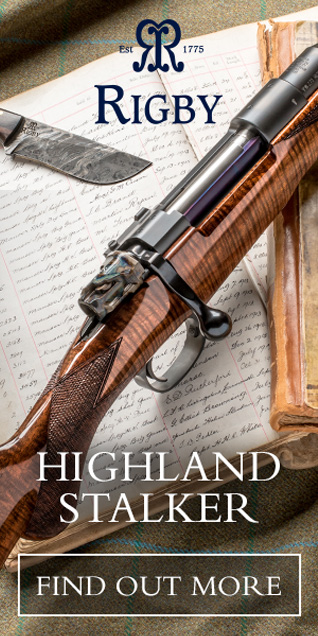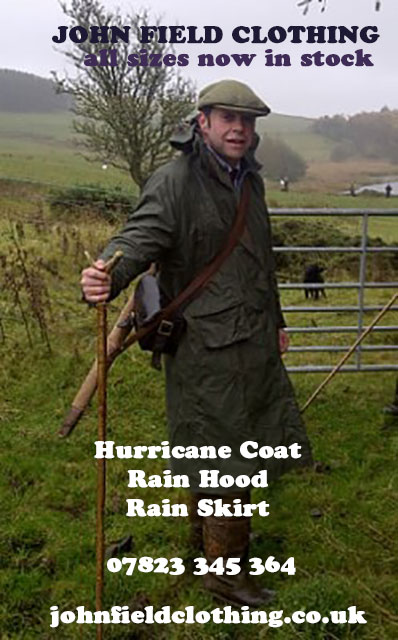Two rifles in my gun room stand side by side and their obvious similarities got me thinking about the role of a rifle in a sporting battery and how it changed when nitro cellulose powders replaced black powder as a propellant.
The first is a .450 black powder express by Army & Navy. It is built on a Webley screw-grip action (Webley & Brain patent). It has 26” barrels, a pistol-grip stock with steel grip cap, two triggers, a Harvey grip catch forend lever, a top-lever operated Anson & Deeley action, sling eyes, a blade foresight with a standing rear sight for 150 yards and an additional leaf for 250 yards.
The second is a Watson Bros ‘Cordite .303’. It is very similar to the Army & Navy in style and character. Built on a Webley PHV-1 action, it also has a Harvey grip catch, pistol-grip stock with steel grip-cap, sling eyes and Anson & Deeley action.
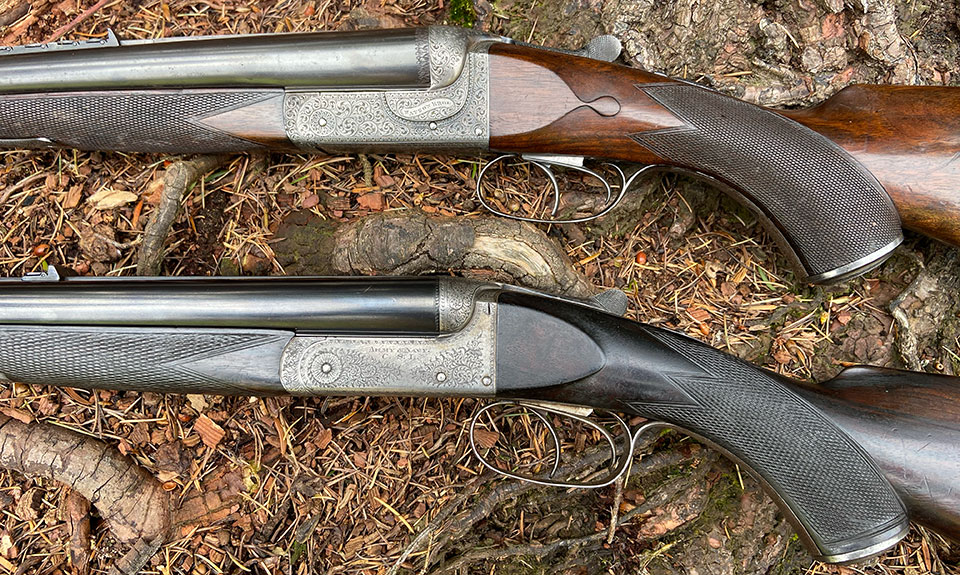
The Watson Bros rifle differs from the Army & Navy in that it has a quarter-rib on its 25” barrel with additional leaf sights to 200,300,400 and 500 yards and a raised ramp foresight. It also has bolsters around the radius of the action; its weakest point.
Another addition is the lever securing the top-safety button. This adds a layer of safety but also a delay in making the rifle ready to fire, which in some circumstances, can be either infuriating or deadly.
The .450 (3 1/4”) is a black powder cartridge and the .303 a smokeless one but they have both taken refuge in rifles of a very similar profile. The .450 BPE dates from the 1870s. It is a straight cased rimmed cartridge loaded with a lead bullet of up to 365-grains. It was extremely popular as a medium game rifle and most serious sportsmen had one at some time. F.C. Selous and John Taylor both owned a .450 and used them successfully on lion and elephant. For most people, however, it was a deer rifle.
When Rigby loaded the case with smokeless powder in 1898 and produced the .450NE, the characteristics changed entirely and it became a dedicated big game rifle. When that happened, the deer rifle needed a new cartridge and one of those gaining popularity was the .303, which also happened to be the British military round of the period.
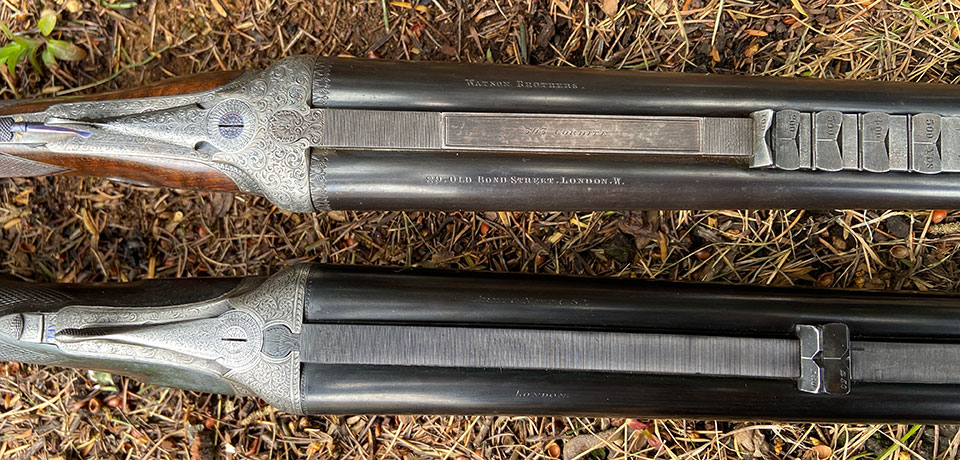
The .450 BPE fires its 365-grain bullet at 1,700 fps and delivers muzzle energy of 2.340 ft/lbs. The 1910 Cordite version of the .303 fires a 174-grain bullet at 2,440 fps and delivers muzzle energy of around 3,200 ft/lbs. This demonstrates the huge increase in performance that smokeless powders brought to smaller bores.
Many sportsmen traded their old .450BPE for a new .303 Cordite. With it they had a portable, swingable rifle of a type they were familiar with but it now had a range of 3,000 yards, not that these distances were ever used in a hunting scenario. Its maximum point blank range of 237 yards was close to the 278 yards point blank of the .450BPE. So, a sportsman could swap to a .303, reap the benefits of smaller, lighter bullets, no black discharge and fouling and still have a rifle that felt very familiar.
Weight distribution for the rifles is as follows: The .303 Watson Bros weighs 9lbs 0oz: barrels 5lbs 5oz, forend 7 3/4oz, stock and action 3lbs 3 1/4oz. The Army & Navy .450BPE weighs 8lbs 3oz: barrels 4lbs 12oz, forend 8 1/2oz, stock and action 2lbs 15oz. So, they do look, feel and handle very alike.
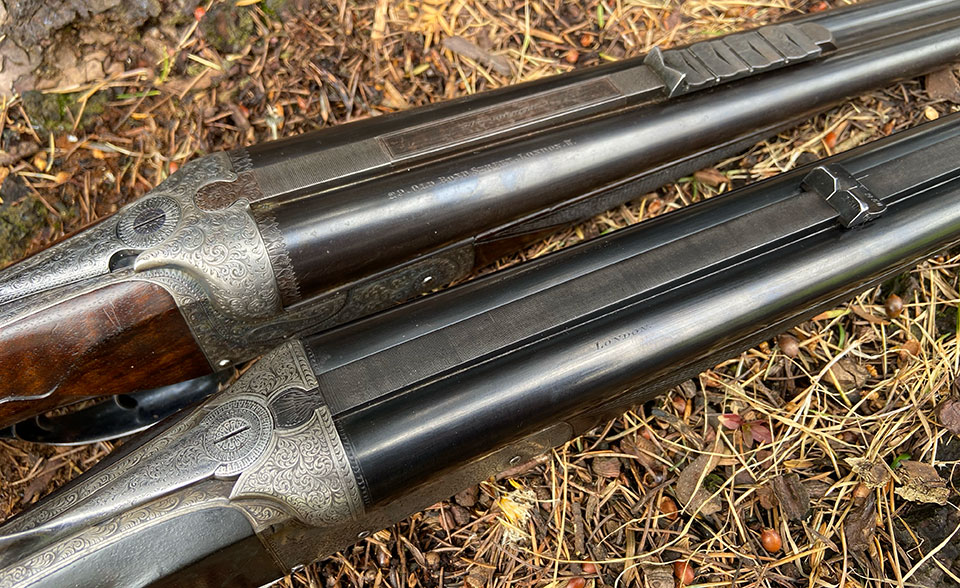
These rifles are of a type we no longer see very often in Britain. double rifles with open sights for deer stalking area thing of the past, now everybody seems to prefer a magazine rifle with a telescopic sight. The double rifle is now mostly the preserve of the big game cartridge, though there is some residual affection in parts of Europe for medium-weight doubles as woodland stalking or driven boar rifles.
Ammunition for both these rifles is now hard to come by. We had some .303 rounds custom loaded recently and have some old Kynoch .450BPE but feeding these beasts is no longer straightforward.
Their heyday was Africa of old, where a handy rifle, powerful enough to handle anything likely to trouble you was a constant companion. These two serve to remind us of that transitionary period at the turn of the last century when rifles adapted from black to smokeless powders.
Finally, a word on the Webley screw-grip and the Webley PHV-1 action. The former was very popular for shotguns and double rifles at the end of the 19th century and provided a third bite to secure the barrels to the action, in addition to the Purdey double under-bolt.
The PHV-1 acton superseded it and was increasingly used for double rifles in the first half of the 20th century. The bolted doll’s head of this action is engaged by a sliding bolt, rather than having the slanted surface of the screw-grip, which is secured by a pressure-bearing lever-grip.
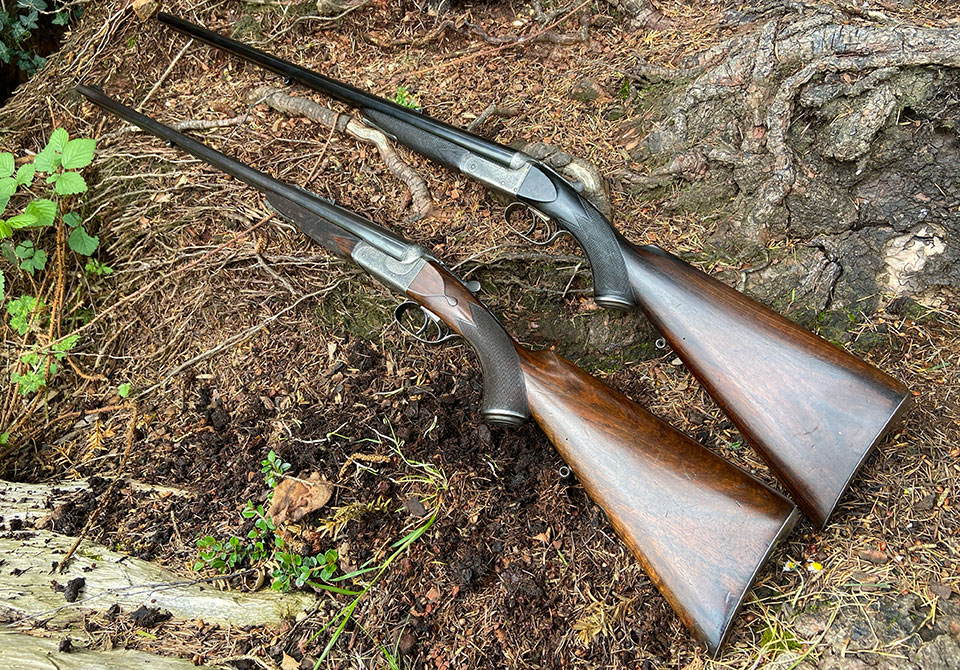
Published by Vintage Guns Ltd on (modified )

